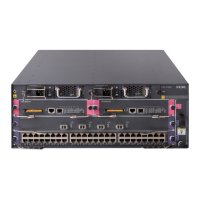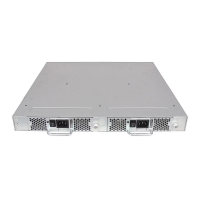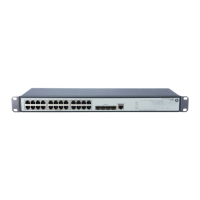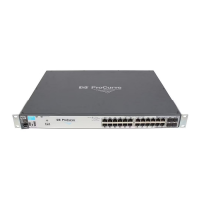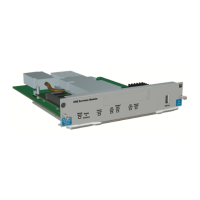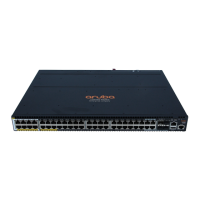HP StorageWorks 8/20q Fibre Channel Switch Installation and Reference Guide 53
3. Display the fabric domain IDs using the show domains CLI command or by selecting the QuickTools
Switch tab, Summary icon. Are all domain IDs in the fabric unique?
•Yes—Continue.
• No—Correct the domain IDs on the offending switches using the set config switch CLI
command or the QuickTools Switch Properties dialog. Reset the port. If the condition remains,
continue.
4. Compare the RA_TOV and ED_TOV timeout values for all switches in the fabric using the show
config switch CLI command or by selecting the QuickTools Switch tab, Advanced icon. Is each
timeout value the same on every switch?
•Yes—Continue.
• No—Correct the timeout values on the offending switches using the set config switch CLI
command or selecting Switch>Advanced Switch Properties in QuickTools. Reset the port. If the
condition remains, continue.
5. Display the active zoneset on each switch using the zoning active CLI command or by selecting the
QuickTools Active Zoneset tab. Compare the zone membership between the two active zonesets. Are
they the same?
• Yes—Contact your authorized maintenance provider.
• No—Deactivate one of the active zonesets or edit the conflicting zones so that their membership is
the same, then reset the port. If the condition remains, contact your authorized maintenance
provider.
NOTE: E_Port isolation can be caused by merging two fabrics whose active zonesets have two zones with
the same name, but different membership.
6. Is the port connected to a switch that supports connection to a TR_Port of an 8/20q Fibre Channel
Switch?
• Yes—Configure the port as a TR_Port and map the local and remote fabric devices.
• No—Contact your authorized maintenance provider.
Excessive port errors
The switch can monitor a set of port errors and generate alarms based on user-defined sample windows
and thresholds. These port errors include the following:
• Cyclic Redundancy Check (CRC) errors
• Decode errors
• ISL connection count
• Device login errors
• Device logout errors
• Loss-of-signal errors
Port threshold alarm monitoring is disabled by default. For information about managing port threshold
alarms, see the HP StorageWorks 8/20q Fibre Channel Switch Command Line Interface Guide.
If the count for any of these errors exceeds the rising trigger for three consecutive sample windows, the
switch generates an alarm and disables the affected port, changing its operational state to “down.” Port
errors can be caused by the following:
• Triggers are too low or the sample window is too small
• Faulty Fibre Channel port cable
• Faulty SFP
• Faulty port
• Faulty device or HBA

